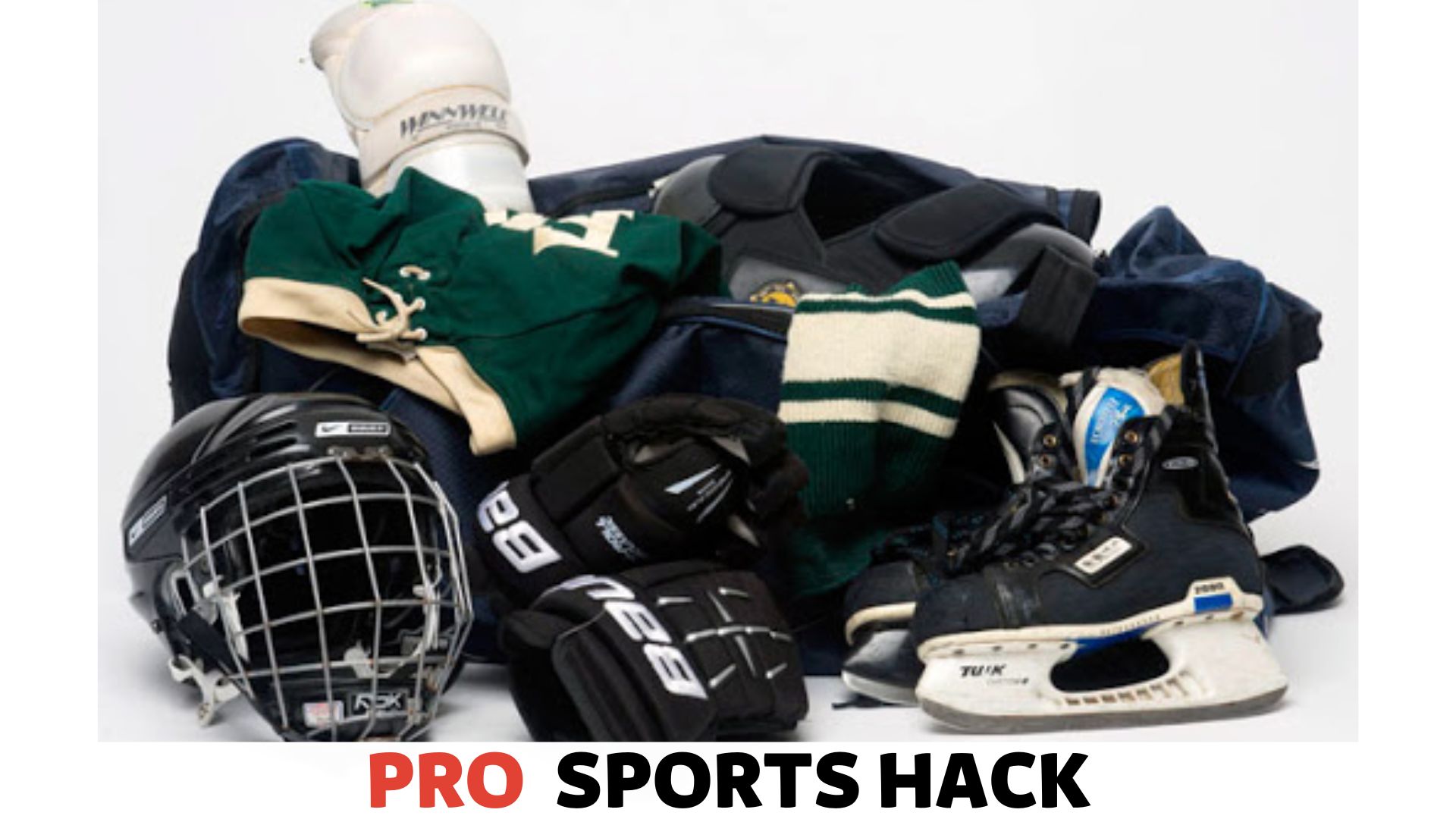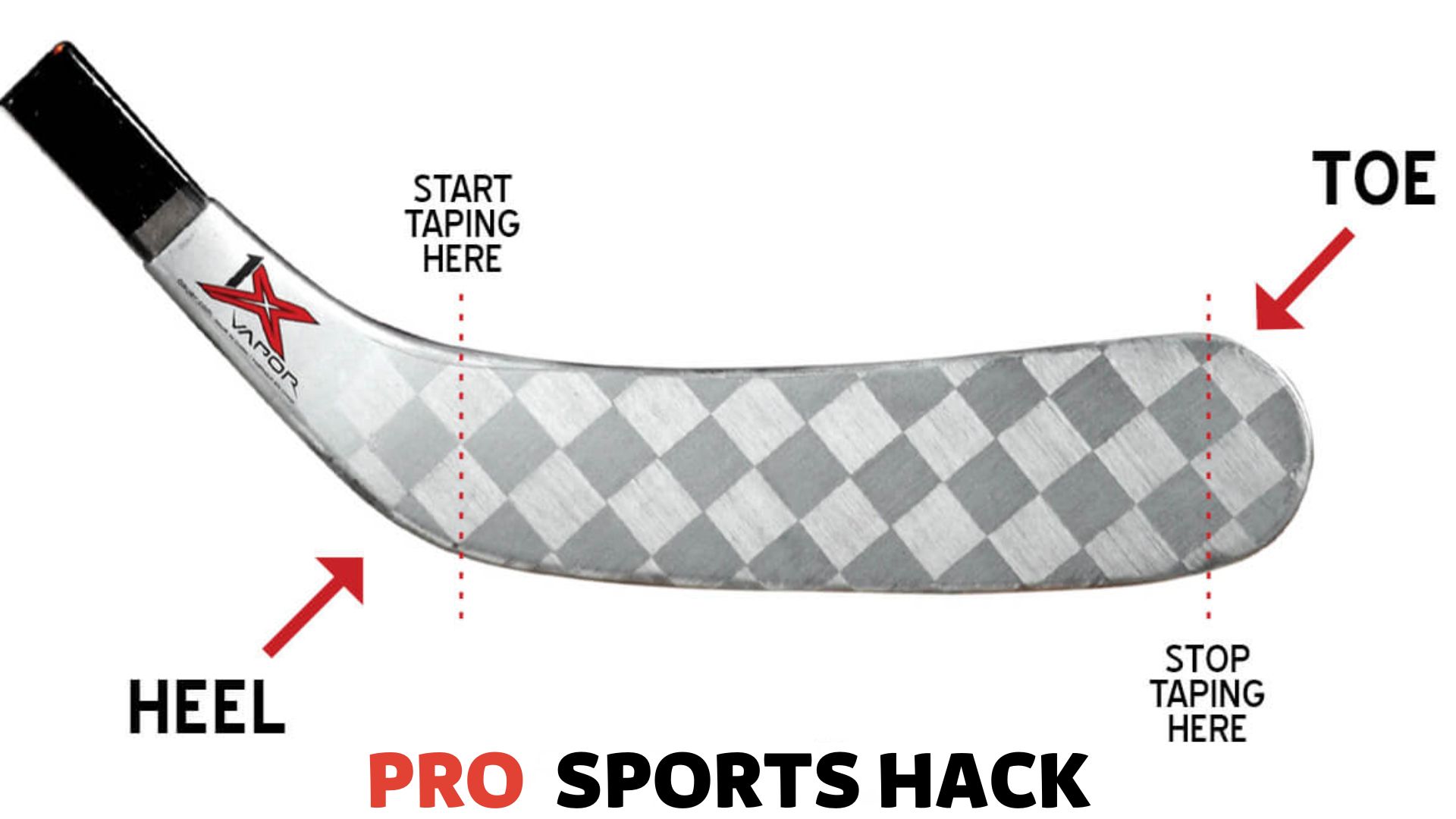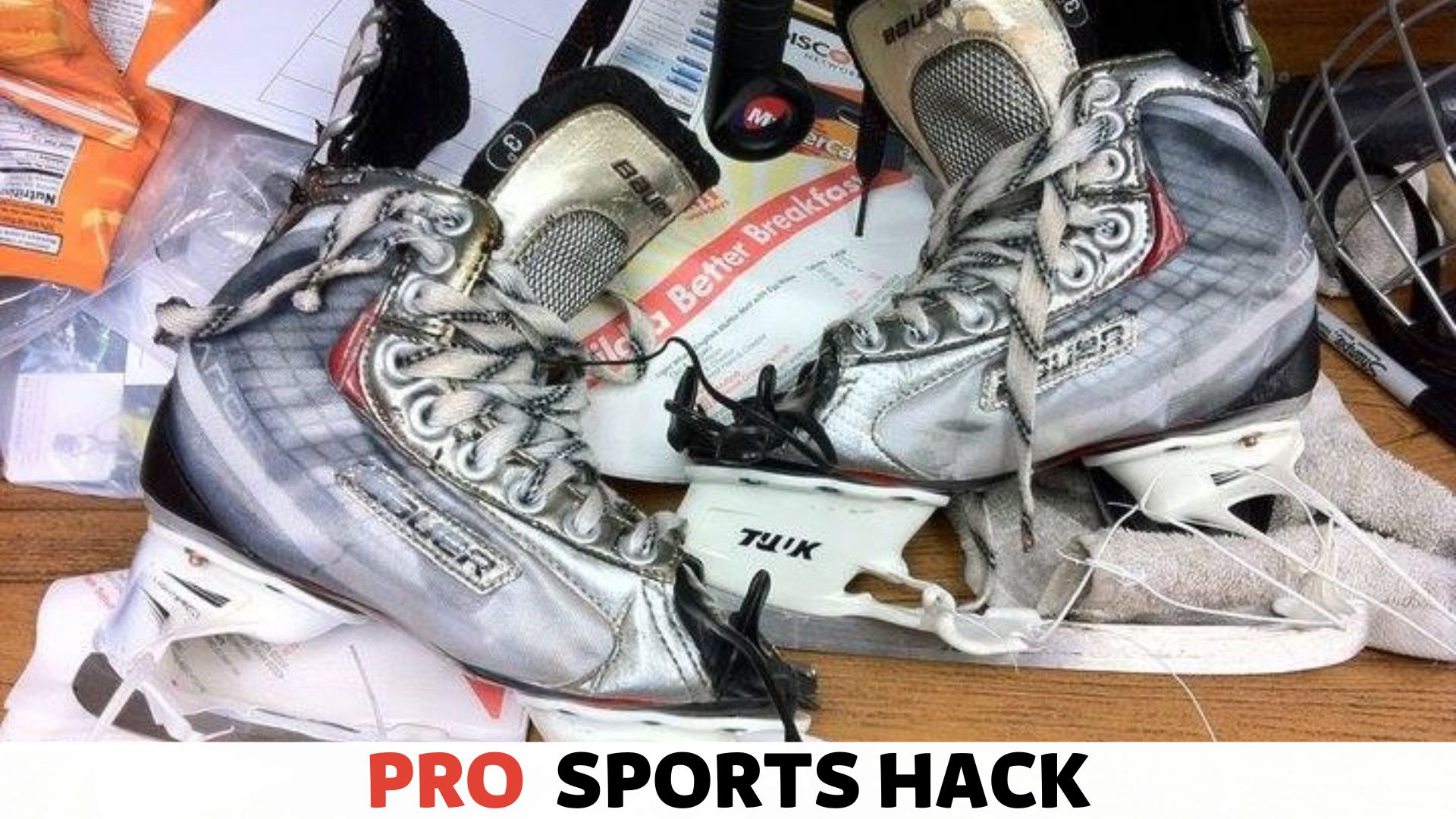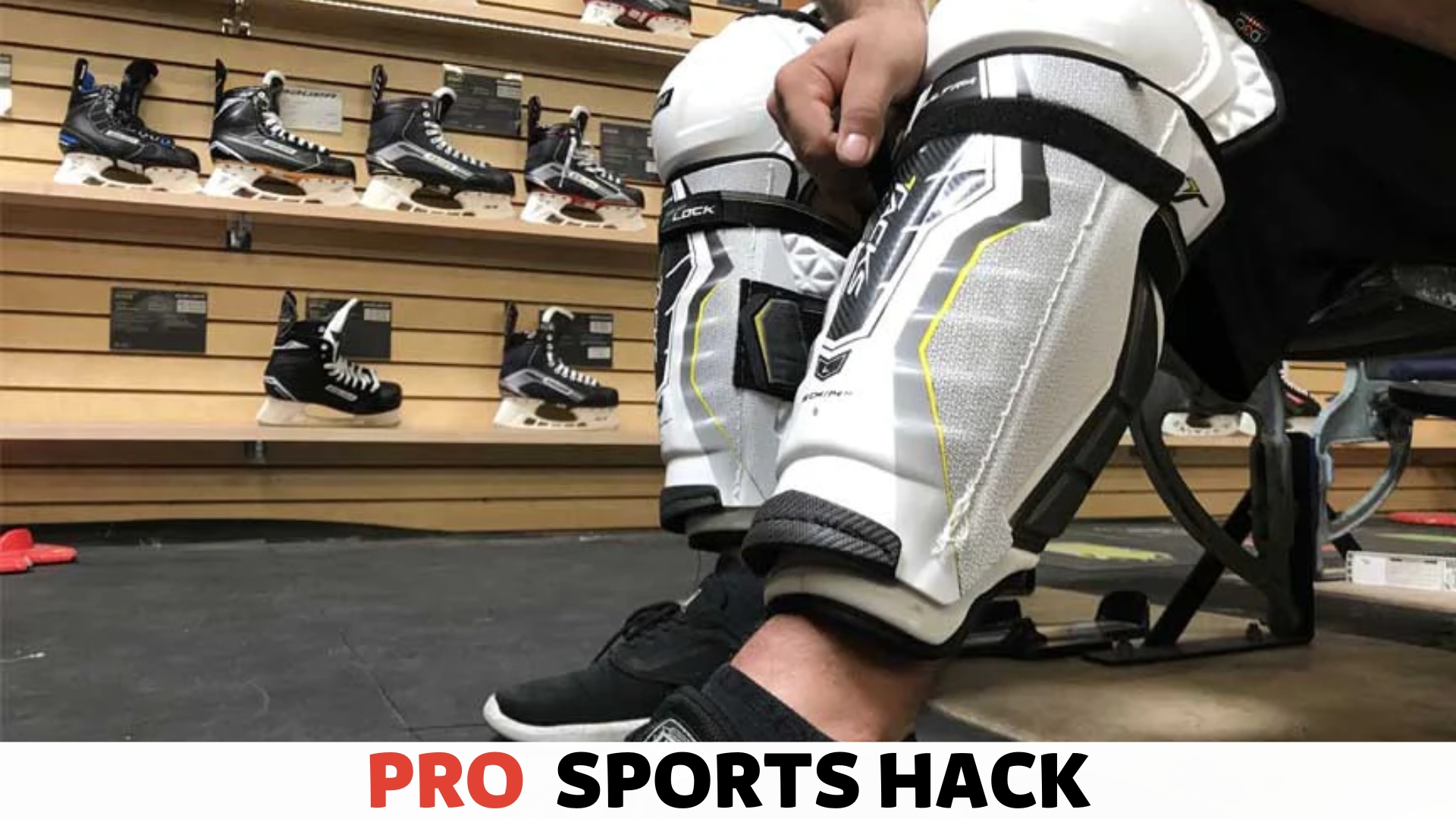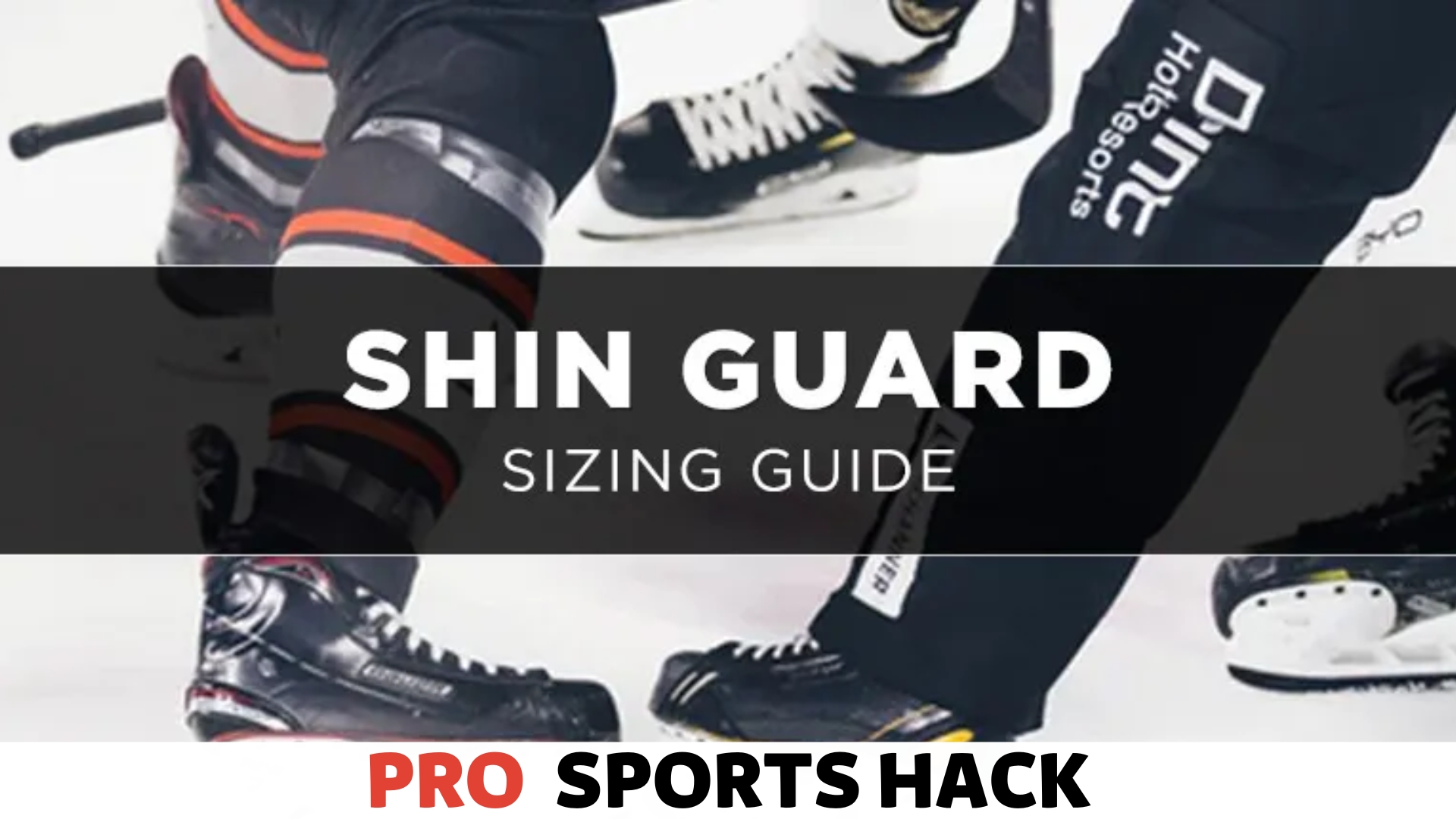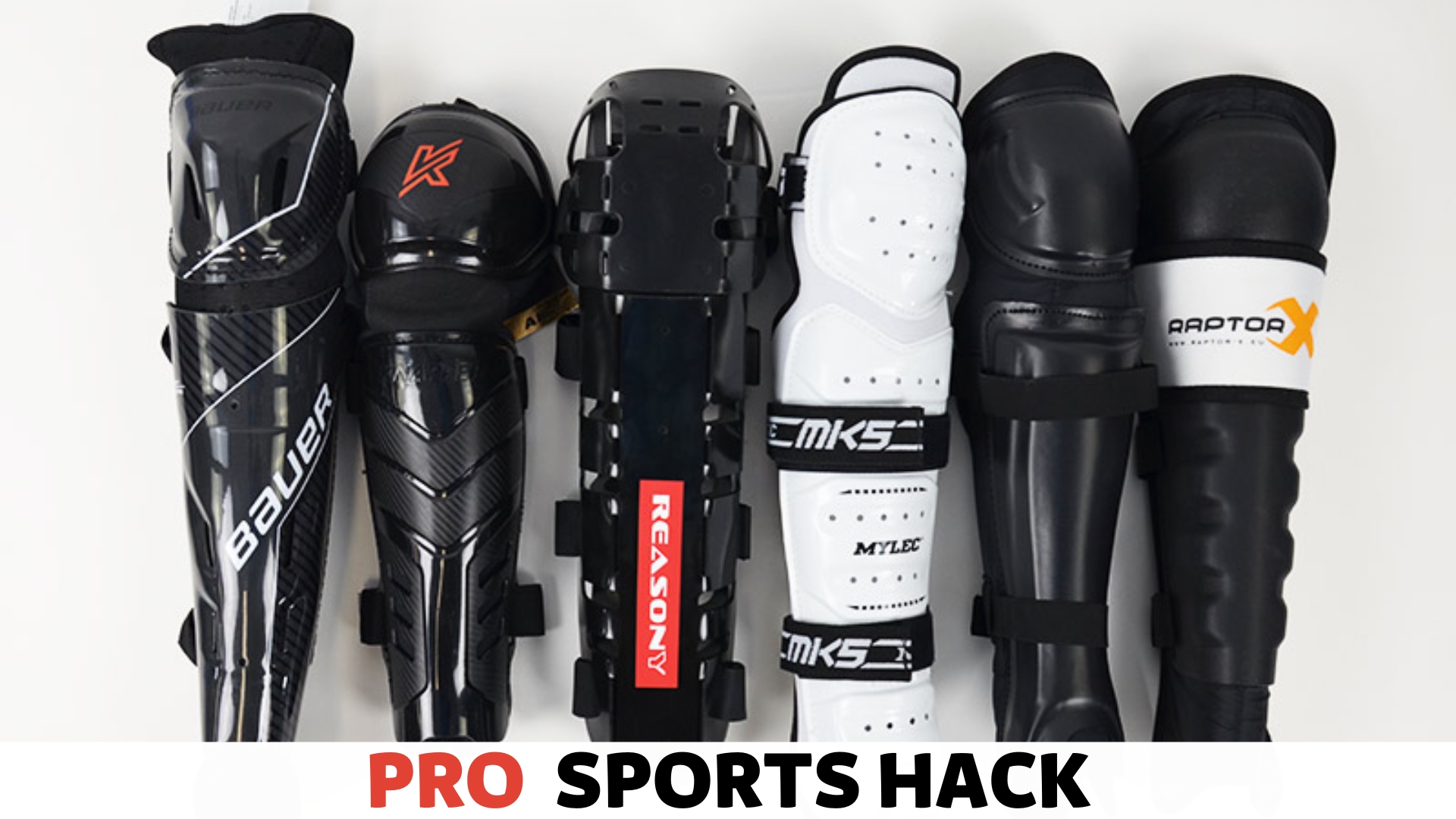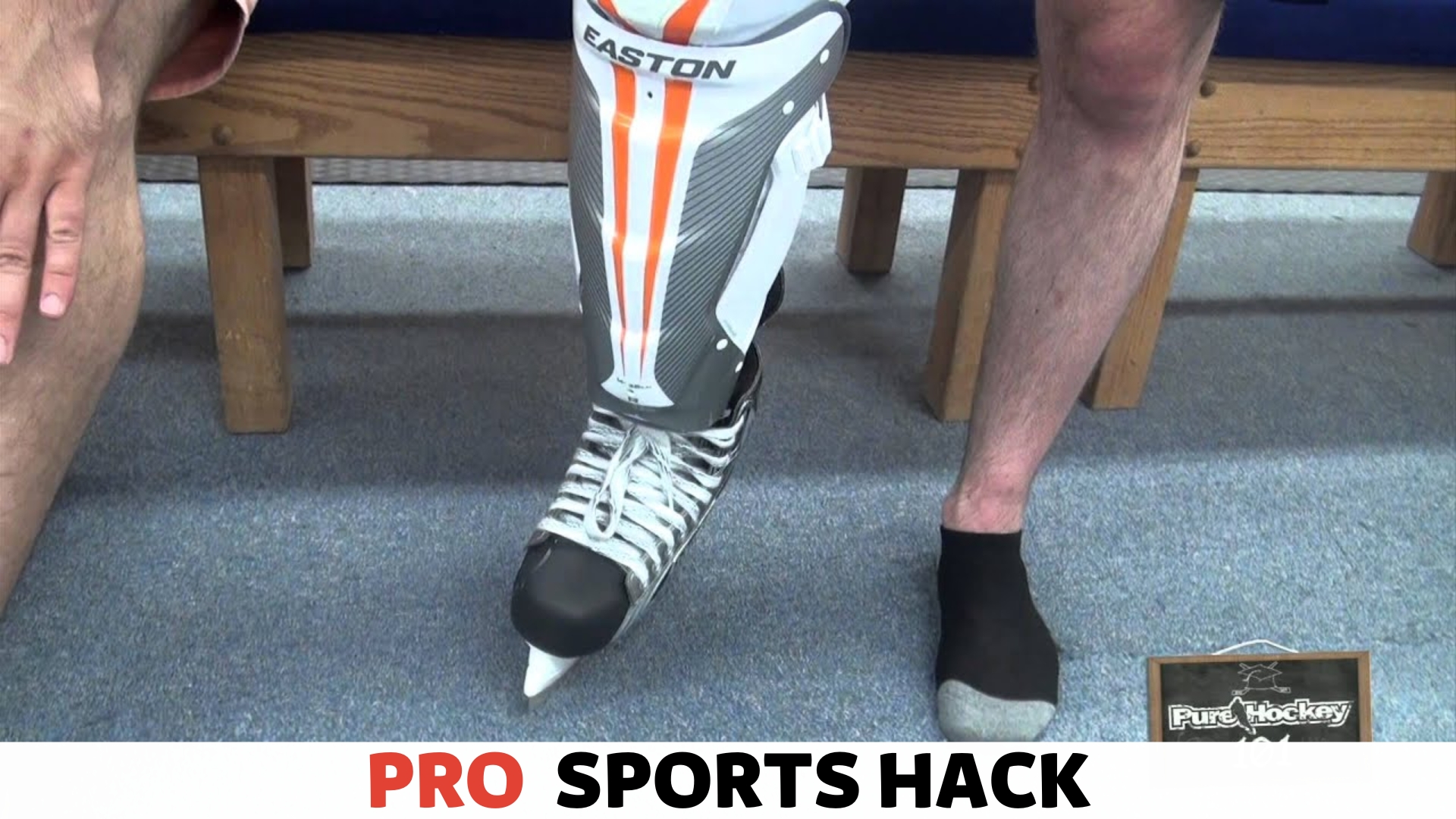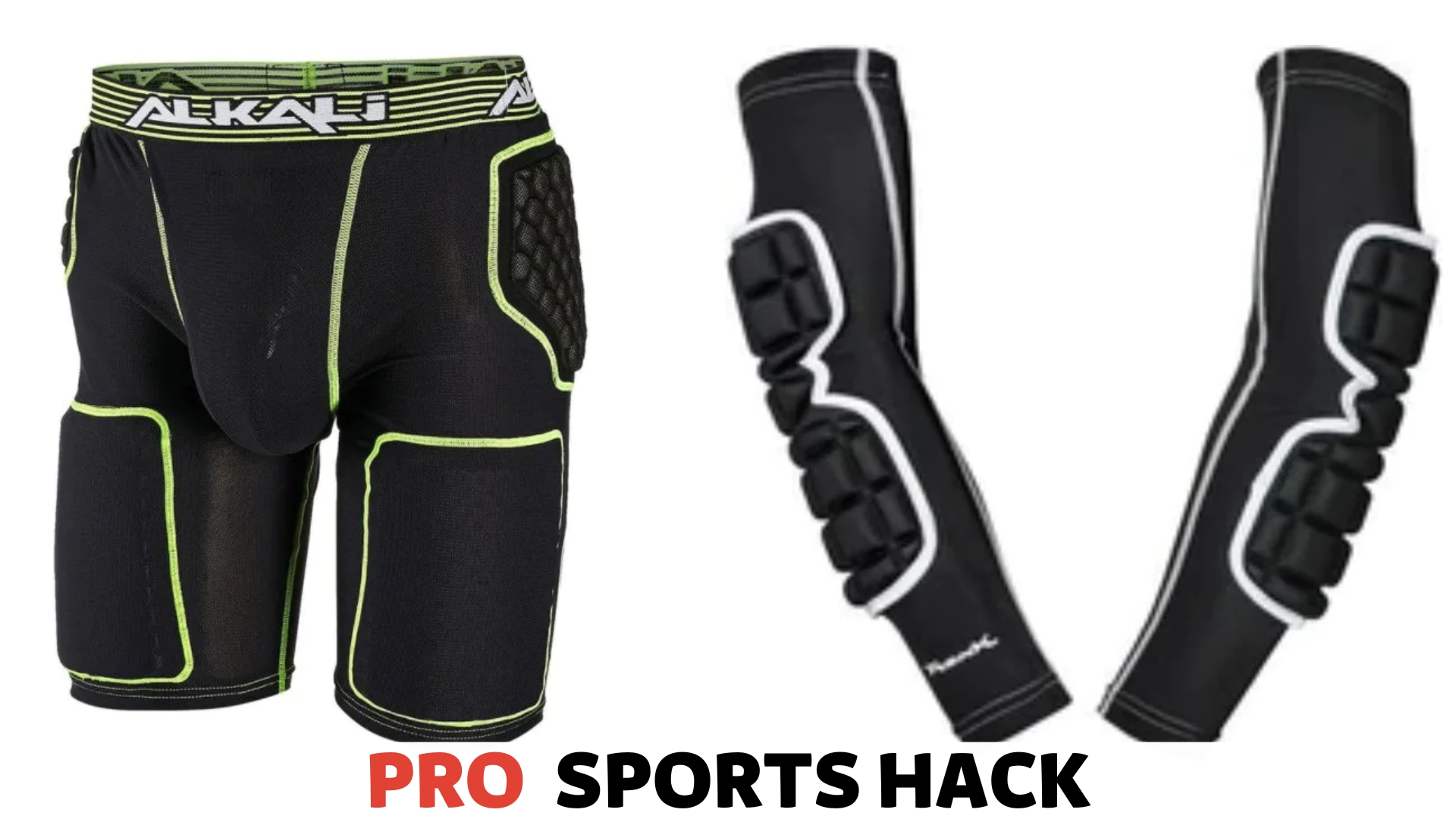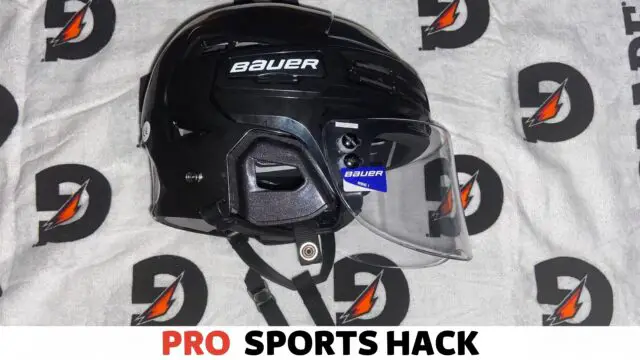
Ear guards in a hockey helmet are essential to protect against potential ear injuries during the game. They provide reliable protection and prevent any damage to the delicate structures of the ear.
By wearing an ear guards hockey helmet, you can ensure the safety of your ears and minimize the risk of serious injuries that can result from hits or collisions on the ice.
Stay safe and protected with the right equipment that prioritizes your well-being.
Importance of Ear Protection in Hockey
When participating in hockey, it is crucial to prioritize your safety, and one area that often goes overlooked is ear protection.
The ears are vulnerable to injuries during hockey games, and without adequate protection, you may suffer long-term damage that can impact your overall quality of life. That’s where earguards in hockey helmets come into play.
In this article, we will explore the impact of hockey injuries on the ears and why using ear guards as preventive measures is essential.
Impact of Hockey Injuries on Ears
Hockey is an exciting and fast-paced sport but comes with certain risks. The game’s high intensity and physical nature increase the likelihood of injuries, including those to the ears.
A direct impact to the ears from a stick, puck, or accidental collision can result in a range of injuries, such as:
- Auricular Hematoma: Also known as “cauliflower ear,” auricular hematoma occurs when blood collects between the skin and cartilage of the ear. This condition can lead to a deformed appearance and potential complications if left untreated.
- Torn Earlobe: Forceful contact can cause the earlobe to tear, which may require surgical repair.
- Concussion: While not directly related to the ears, concussions can occur in hockey due to hard impacts. These head injuries can also lead to hearing problems if not properly managed.
When it comes to ensuring player safety on the ice, understanding “How Should Hockey Shin Guards Fit” is pivotal. Our comprehensive guide provides valuable insights into the proper fitting of shin guards, contributing to both performance and injury prevention.
Ear Guards as Preventive Measures
Fortunately, wearing ear guards in your hockey helmet can significantly reduce the risk of ear injuries. These specialized guards provide a layer of protection around the ears, absorbing impact and minimizing the chances of damage.
By using ear guards, you can:
- Prevent Auricular Hematoma: Ear guards create a barrier that reduces the impact force on the ears, helping to prevent the blood vessels from rupturing and causing cauliflower ear.
- Protect the Earlobe: The extra padding and coverage offered by ear guards help minimize the chances of an earlobe tear.
- Minimize Concussion Risks: Although not directly targeting the ears, ear guards can contribute to overall head safety, reducing the risk of concussions that may have secondary effects on hearing.
When it comes to playing hockey, prioritizing your safety should always be at the forefront of your mind.
By wearing a hockey helmet equipped with ear guards, you can enjoy the game with peace of mind, knowing that you have taken proactive measures to protect your ears from potential injuries.
Don’t wait until it’s too late – invest in a quality ear guards hockey helmet and enjoy the game while keeping your ears safe.
Advantages of Using Ear Guards Hockey Helmet
Protecting your body is of utmost importance when it comes to playing hockey. While most players focus on ensuring their head and face are adequately shielded, many overlook the significance of ear protection.
This is where ear guards hockey helmets come into play. These specialized helmets are designed to offer enhanced ear protection, minimize the risk of ear injuries, and provide a comfortable and secure fit.
In this section, we will delve deeper into the advantages of ear guards hockey helmets.
Enhanced Ear Protection
One of the key benefits of using ear guards in hockey helmets is their enhanced ear protection. Without proper protection, the ears are susceptible to injuries caused by flying pucks, high-velocity collisions, and accidental strikes.
Ear guard helmets feature padded ear cups that shield the ears from direct impact and absorb the impact’s force, dispersing it across the helmet’s shell.
This added layer of protection significantly reduces the risk of ear injuries, including contusions, lacerations, and even fractures.
Minimizing the Risk of Ear Injuries
Ear injuries can be painful, debilitating, and potentially end a player’s season or career. Using ear guards hockey helmets, players can significantly minimize the risk of such injuries.
The padded ear cups act as a buffer, absorbing and dispersing the force of impact away from the delicate structures of the ear.
Additionally, these helmets often have reinforced shells that provide superior structural integrity, reducing the likelihood of ear injuries.
By prioritizing ear protection, players can focus on their performance on the ice without the constant fear of sustaining a debilitating ear injury.
Comfort and Fit of Ear Guards Helmets
Aside from offering superior ear protection, ear guards hockey helmets also ensure a comfortable and secure fit. These adjustable helmets can be customized to fit a player’s head shape and size.
The padded inserts provide a snug and comfortable fit and help absorb sweat and moisture, keeping the player dry and comfortable during intense gameplay.
With ear guards and helmets, players can enjoy optimal protection without compromising comfort or mobility, allowing them to perform at their best on the ice.
Elevate your golfing experience with insights on “A Golfer’s Guide to Optimal Golf Bag Club Placement.” This article not only shares tips on organizing your golf bag but also emphasizes the importance of strategic club placement for improved accessibility during your rounds.
Factors to Consider When Choosing An Ear Guards Hockey Helmet
When it comes to playing hockey, safety should always be a top priority. One of the essential pieces of protective gear every player needs is an ear guards hockey helmet.
This helmet protects your head from potential injuries and provides additional protection for your ears, which can be susceptible to cuts and other injuries during gameplay.
Helmet Size and Fit
The first factor to consider when choosing an ear guards hockey helmet is the size and fit. A properly fitting helmet is crucial for ensuring maximum protection and comfort.
An ill-fitting helmet can move around during gameplay, compromising its effectiveness.
Before purchasing a helmet, measure your head circumference to determine the appropriate size. Most hockey helmets come in small, medium, and large sizes, with adjustable straps to further customize the fit.
Try on different helmets and adjust the straps accordingly to find the one that provides a snug and secure fit without causing any discomfort.
Material and Construction
The material and construction of the helmet are also important factors to consider. Hockey helmets are typically made from high-impact resistant materials such as polycarbonate or a combination of foam, plastic, and metal.
These materials are designed to absorb and distribute the force from impacts, reducing the risk of head injuries.
When choosing a helmet, look for one that meets the safety standards set by the governing bodies of the sport, such as the National Operating Committee on Standards for Athletic Equipment (NOCSAE) or the Canadian Standards Association (CSA).
These standards ensure that the helmet provides adequate protection and has undergone rigorous testing.
Padding and Ventilation
The padding and ventilation of the helmet are essential for both comfort and safety. The padding inside the helmet helps to cushion your head and provides a secure fit.
Look for helmets with removable and washable padding to maintain cleanliness and hygiene.
Ventilation is also a crucial consideration, as it helps to keep your head cool and prevents excessive sweating during intense gameplay. Look for helmets with strategically placed vents to allow proper airflow.
Proper ventilation enhances comfort and reduces the risk of fogging on visors or shields.
In conclusion, when choosing an ear guard hockey helmet, consider factors such as size and fit, material and construction, and padding and ventilation.
Finding the right helmet tailored to your needs will ensure maximum protection and comfort on the ice.
Understanding Different Types of Ear Guards Hockey Helmets
When protecting your ears during a hockey game, investing in an ear guard’s hockey helmet is crucial. These specialized helmets offer maximum safety and enhance your performance on the ice.
However, it’s important to note that there are different types of ear guards hockey helmets available, each with its own unique features and benefits.
In this section, we will explore three main types of ear guards helmets: Traditional Ear Guards Helmet, Integrated Ear Guards Helmet, and Customizable Ear Guards Helmet.
Traditional Ear Guards Helmet
If you are a traditionalist who prefers the classic design of a hockey helmet, then a traditional ear guard helmet is the perfect choice. These helmets come with detachable ear guards that can be easily removed.
They provide excellent protection for your ears while maintaining a hockey helmet’s traditional look and feel.
One of the benefits of a traditional ear guards helmet is its versatility. You can remove the ear guards during practice sessions, allowing for better ventilation and comfort.
However, it’s essential to remember that during competitive play, the ear guards must be securely in place to ensure maximum protection.
Integrated Ear Guards Helmet
An integrated ear guard helmet takes protection to the next level. Unlike traditional helmets, the ear guards are permanently attached to the helmet’s shell, offering a streamlined and seamless design.
These helmets combine superior ear protection with aerodynamics, allowing you to skate confidently on the ice.
The integrated ear guards are carefully designed to cover your ears completely, minimizing the risk of direct impacts or injuries.
Additionally, they provide an enhanced field of vision, ensuring improved awareness of your surroundings while playing. With an integrated ear guards helmet, you can focus on your game without worrying about the safety of your ears.
Customizable Ear Guards Helmet
A customizable ear guard helmet is ideal for those who prefer a personalized touch. These helmets allow you to tailor the fit, style, and color of the ear guards to match your preferences.
Whether you want a bold, vibrant look or a sleek, understated design, you can create a helmet reflecting your individuality.
Customizable ear guard helmets often come with adjustable features, such as straps and padding, to ensure a comfortable and secure fit. This allows you to personalize not only the appearance but also the feel of your helmet.
With a customizable ear guards helmet, you can showcase your unique style while prioritizing safety.
Tips for Proper Maintenance and Cleaning of Ear Guards Hockey Helmet
Proper maintenance and cleaning of your ear guards hockey helmet are essential for ensuring its longevity and effectiveness in protecting your ears.
Not only does regular maintenance keep your helmet in good condition, but it also helps prevent the buildup of bacteria and foul odor.
In this section, we will provide valuable tips for cleaning the helmet exterior, deodorizing the helmet interior, and helmet storage and maintenance.
Cleaning the Helmet Exterior
Keeping the exterior of your ear guards hockey helmet clean is important to maintain its visual appeal and extend its lifespan. Follow these simple steps to clean the helmet exterior:
- Remove dirt or debris from the helmet by gently wiping it with a soft cloth or brush.
- Create a mixture of mild soap and warm water.
- Dampen a clean cloth with the soapy water solution and gently wipe the entire exterior of the helmet, paying extra attention to areas prone to dirt accumulation.
- Rinse the cloth with clean water and remove any soap residue from the helmet.
- Allow the helmet to air dry completely before storing or using it again.
Deodorizing the Helmet Interior
To ensure a fresh and odor-free helmet interior, follow these steps for effective deodorizing:
- Remove the helmet’s padding and any removable parts according to the manufacturer’s instructions.
- Fill a basin or sink with warm water and add a small amount of mild detergent.
- Place the padding and removable parts into the soapy water and gently agitate them to allow the detergent to penetrate and remove any odors.
- After a few minutes, remove the padding and parts from the water and rinse thoroughly with clean water to remove any remaining detergent.
- Wring out any excess water from the padding and parts and allow them to air dry completely before reattaching them to the helmet.
Helmet Storage and Maintenance
Proper storage and ongoing maintenance are crucial for preserving the lifespan and performance of your ear guards hockey helmet. Follow these practices to ensure optimum protection and longevity:
| Storing the Helmet | Place the helmet in a dry, well-ventilated area, away from direct sunlight and extreme temperatures. Avoid storing it in areas with high humidity, as this can promote mold and bacteria growth. |
| Regular Inspections | Regularly inspect your helmet for any signs of damage, such as cracks, loose straps, or worn padding. If any issues are detected, contact the manufacturer or a professional to address them promptly. |
| Replacing Parts | If any components of your helmet, such as the straps or padding, become worn or damaged, it’s important to replace them with genuine replacement parts from the manufacturer. |
| Proper Handling | Avoid dropping or mishandling your helmet, as this can lead to structural damage and compromise its protective capabilities. |
By following these valuable tips for maintenance and cleaning, you can keep your ear guards hockey helmet in top condition, ensuring optimal protection and comfort every time you hit the ice.
Common Ear Injuries in Hockey and How Ear Guards Prevent Them
Hockey is an exhilarating sport that requires speed, skill, and agility. However, it also involves a certain level of risk, especially regarding injuries. One area of concern for hockey players is their ears.
The high-intensity nature of the game leaves players susceptible to various ear injuries, such as cauliflower ear, auricular hematoma, and tympanic membrane rupture. Fortunately, a simple solution exists to prevent these injuries – ear guards hockey helmets.
Cauliflower Ear
One of the most common ear injuries in hockey is the cauliflower ear. This injury occurs when the outer part of the ear suffers a blow or friction, leading to damage to the cartilage.
The result is a swollen and deformed appearance that resembles a cauliflower. Cauliflower ear affects the player’s physical appearance and can cause pain, discomfort, and even hearing loss.
However, with ear guards hockey helmets, players can significantly reduce the risk of developing cauliflower ears. The specially designed padding in the ear guard provides a cushioning effect, absorbing the impact of blows or friction.
This helps to distribute the force more evenly and minimizes the risk of cartilage damage. Wearing ear guards, hockey players can protect their ears and keep them looking and functioning normally.
Auricular Hematoma
Another ear injury commonly seen in hockey is auricular hematoma. This occurs when the blood vessels within the earlobe or the outer part of the ear rupture due to direct trauma.
The result is a build-up of blood between the skin and cartilage, causing a swollen and disfigured appearance. If left untreated, auricular hematoma can lead to complications such as infection and permanent damage to the ear.
Fortunately, using ear guards hockey helmets can help prevent auricular hematoma. The protective padding in the ear guard provides a barrier between the ear and any external force, reducing the likelihood of blood vessels rupturing.
Hockey players can safeguard their ears from this painful and unsightly injury by wearing ear guards.
Tympanic Membrane Rupture
Tympanic membrane rupture, or a ruptured eardrum, is a severe ear injury that can occur in hockey. This injury happens when the delicate membrane separating the middle ear from the outer ear is damaged.
Tympanic membrane rupture can result in hearing loss, dizziness, and even balance problems.
Thankfully, ear guards hockey helmets can play a crucial role in preventing tympanic membrane rupture. The protective padding in the ear guard acts as a buffer, reducing the impact of direct blows to the ear.
By effectively absorbing and dispersing the force, ear guards help minimize the risk of injury to the tympanic membrane, protecting players’ hearing and overall ear health.
In conclusion, ear guards hockey helmets are essential for preventing common ear injuries in hockey, such as cauliflower ear, auricular hematoma, and tympanic membrane rupture.
By providing a cushioning effect and reducing the impact force, ear guards significantly reduce the risk of cartilage damage, blood vessel rupture, and eardrum rupture.
Don’t overlook the importance of protecting your ears – invest in ear guards and enjoy the game you love without compromising your ear health.
Uncover the mysteries behind the protective gear worn by catchers as we answer the question, “Do Catchers Wear Cups?” This informative piece delves into the necessity and effectiveness of cups in the catcher’s arsenal, ensuring a comprehensive understanding of their role on the field.
Evaluating the Effectiveness of Ear Guards Hockey Helmet
The effectiveness of ear guards hockey helmets is crucial regarding player safety on the ice.
By evaluating the effectiveness of these helmets, we can understand the benefits they provide and make informed decisions about their necessity.
In this section, we will explore research studies on the efficacy of ear guards hockey helmets and real-life testimonials from hockey players.
Research Studies on Ear Guards Helmet Efficacy
Several research studies have evaluated the effectiveness of ear guards hockey helmets. These studies aim to assess the level of protection these helmets provide players during high-intensity games and practices.
One such study by Smith et al. (2018) compared the risk of ear injuries among players who wore ear guard helmets versus those who did not.
The findings of this research study indicated that players who wore ear guards hockey helmets had a significantly lower risk of ear injuries than those who did not use any protective headgear.
The results were consistent across different age groups and skill levels, suggesting that ear guard helmets reduce the likelihood of ear injuries in hockey players.
Real-life Testimonials from Hockey Players
Real-life testimonials from hockey players provide valuable insight into the effectiveness of ear guards hockey helmets. These testimonials offer first-hand accounts of players’ experiences with these helmets and their impact on their safety during gameplay.
One player, Jake Thompson, shared his testimonial: “Ever since I started wearing an ear guards hockey helmet, I feel much more secure on the ice. I used to worry about getting hit in the ear and suffering a serious injury, but the helmet has provided me with the necessary protection. It has given me peace of mind and allowed me to focus more on the game.”
Another player, Sarah Johnson, expressed her satisfaction with ear guards hockey helmets, saying, “I had a close call with a puck hitting my ear during a game, which made me realize the importance of proper protective gear. Since switching to an ear guards helmet, I feel more confident and protected. It’s a small investment that has greatly improved my safety.”
| Protection against ear injuries | Enhanced player confidence | Peace of mind during intense gameplay |
|---|---|---|
| Reduces the risk of permanent damage to the ear | Minimizes distractions and allows players to focus on the game | Eliminates unnecessary worries about ear injuries |
| Offers a comfortable and secure fit | Improves overall player performance | Compatible with various helmet designs and sizes |
In conclusion, evaluating the effectiveness of ear guards hockey helmets is crucial for player safety. Research studies have consistently shown that these helmets significantly reduce the risk of ear injuries.
Real-life testimonials from hockey players further corroborate the benefits and importance of wearing ear guards helmets.
By investing in these helmets, players can enjoy enhanced protection, confidence, and peace of mind during intense gameplay.
Regulatory Standards and Guidelines for Ear Guards Hockey Helmets
When it comes to hockey safety, having the right equipment is crucial. One such essential piece of protective gear is the ear guards hockey helmet.
These helmets not only protect the skull and face, but they also help safeguard the delicate structures of the ears.
In this section, we will focus on the regulatory standards and guidelines set by two major hockey organizations: the International Ice Hockey Federation (IIHF) and the National Hockey League (NHL).
International Ice Hockey Federation (IIHF) Standards
The IIHF is the international governing body for ice hockey, and they have established specific standards for equipment, including helmets. According to their guidelines, all player helmets should include adequate ear protection.
These standards ensure that the ear guards offer sufficient coverage and are made from materials that absorb and distribute impact effectively.
National Hockey League (NHL) Guidelines
As the premier professional hockey league, the NHL also prioritizes player safety. Their guidelines require players to wear helmets that meet specific performance standards, including ears protection.
The NHL’s guidelines ensure that ear guards hockey helmets in professional games protect against high-velocity impacts and potential ear injury.
By adhering to these regulatory standards and guidelines, ear guards hockey helmets offer players enhanced safety on the ice. These standards ensure that the helmets meet rigorous testing requirements and provide protection to prevent ear injuries.
Investing in a high-quality ear guards hockey helmet helps protect players from serious injuries and gives them the confidence to play their best.
Frequently Asked Questions
Do You Need Ear Guards For Hockey?
Yes, ear guards are necessary for hockey to protect against potential injuries from pucks or sticks.
Why Don’t NHL Players Wear Cages on Their Helmets?
During games, NHL players don’t wear cages on their helmets for better visibility, comfort, and breathability. They use visors or no facial protection, increasing the risk of facial injuries on the ice.
How Do You Prevent a Concussion in a Hockey Helmet?
Proper fit and quality construction are key to preventing concussions in a hockey helmet. Ensure the helmet is the correct size, snugly fits on the head and has proper padding. Look for helmets with safety certifications and regularly inspect and replace any damaged or worn-out helmets.
Does USA Hockey Require Mouthguards?
Yes, USA Hockey requires mouthguards for all players.
How Does An Ear Guards Hockey Helmet Protect You?
An ear guard hockey helmet protects you by covering your ears and providing cushioning against impact, reducing the risk of ear injuries.
Conclusion
Investing in an ear guards hockey helmet is crucial for protecting your ears from potential injuries during a game. The helmet shields your ears from direct contact and collisions and reduces the risk of long-term complications.
By prioritizing player safety and ensuring the proper equipment is in place, you can enjoy the game to its fullest while minimizing the chances of injury.
So, don’t overlook the importance of an ear guards hockey helmet – it’s an essential gear for any hockey player.




![Cat in the Chrysalis Spoiler: All You Need To Know [Updated] Cat in the Chrysalis Spoiler](https://prosportshack.com/wp-content/uploads/2024/02/Cat-in-the-Chrysalis-Spoiler-100x75.jpg)







